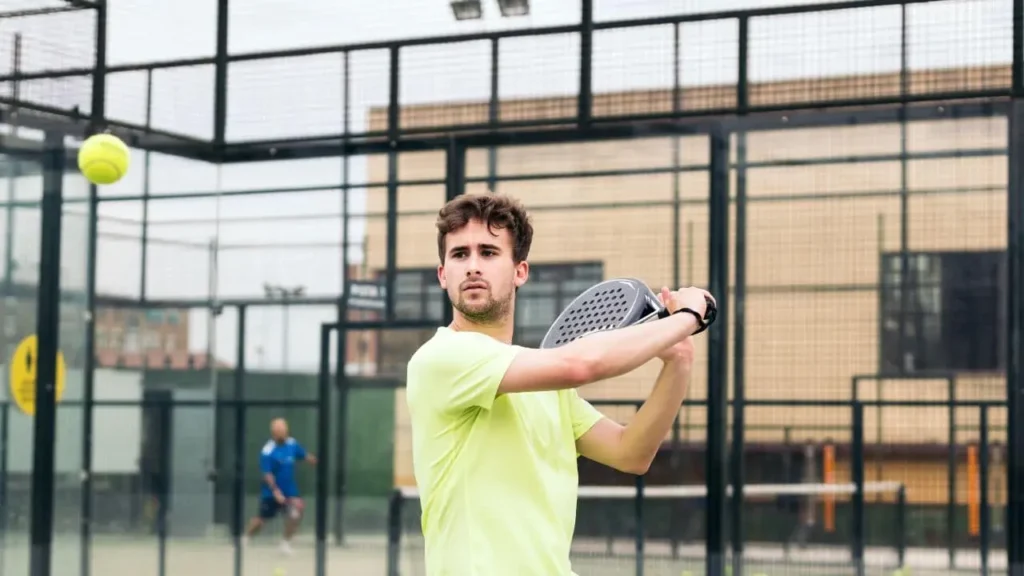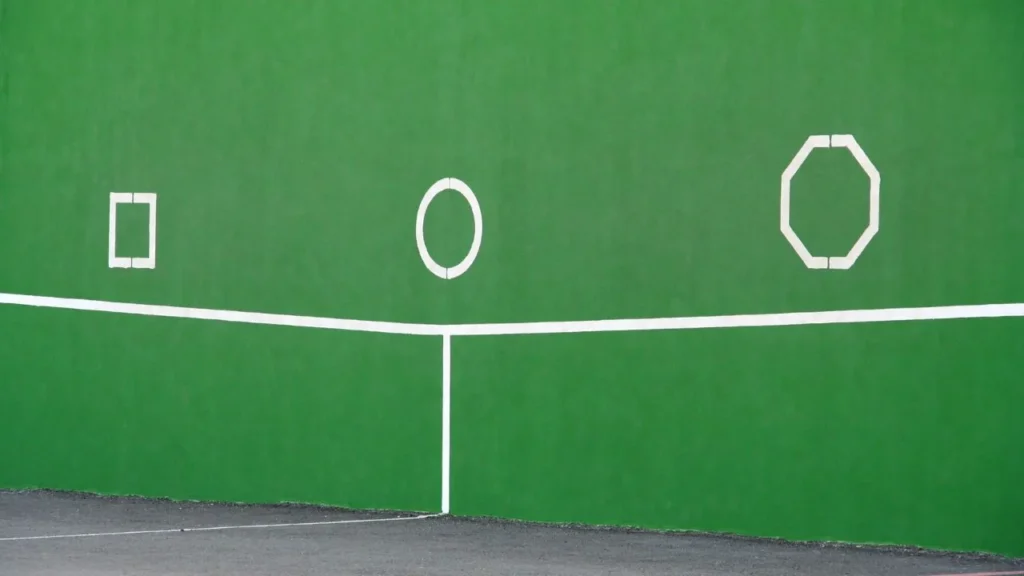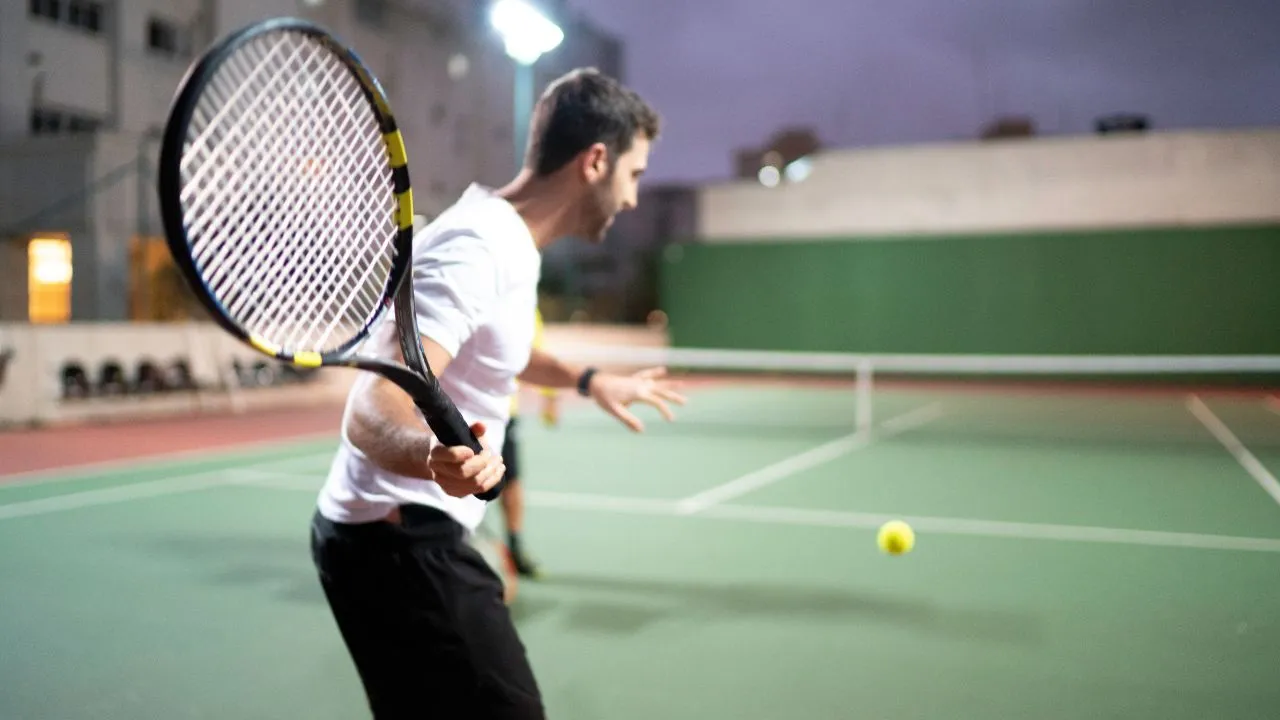Have you recently thought about improving your tennis skills but don’t have any playing partners? Solo practicing improves your game! In this blog, we will focus on some effective and easy ways to practice tennis alone.
You will be able to practice your strokes, footwork, as well as the serve through engaging drills. We will also offer practical advice on how to stay productive and encourage yourself throughout the session. No matter if you’re a beginner or just want to get some groove back into your game, these simple tips will improve how you play tennis by yourself. Every new journey is hard, so let’s begin working towards being a better tennis player.
Table of Contents
ToggleBenefits of Practicing Tennis Alone
When you practice alone, you enjoy enhanced games and confidence. The most notable advantage is often personalized focus. Thus, you can focus on your weak areas. You can improve these areas easily. It refines your serve, perfects your groundstrokes, or improves footwork. It allows you to spend extra time on weaknesses without interruptions from others.
Another key benefit is flexibility and time management. This is useful for fitting tennis classes into a busy timetable. Flexibility allows you to tailor your practice to the desires of your movement.
Mental strength and self-discipline are improved through one-on-one practice. Without a coach and partner, players need self-motivation and focus. This develops independence, mental toughness, and discipline. So Solo practice forces you to rely on yourself to stay engaged and committed. It can boost confidence and improve your performance during matches.
Practicing by yourself or at home gives better self-awareness. If you record sessions or use mirrors for shadow swings, it identifies mistakes. It enables you to make any needed changes independently. This self-awareness makes you more accountable for improvement.
Essential Tools & Equipment to Practice Tennis Alone
Players may enhance their skills and polish their methods with the correct tools. They may increase their physical fitness on their own by practicing alone. You need tools like tennis, tennis ball, and tennis racket for practice alone. Without these tools, don’t start your practice. Complete your tools kit before starting your match or training. These are necessary for tennis practice if you do not have a coach or partner. Here is a list of some tools:
- Tennis Ball: A tennis ball is important to train your shots and enhance control.
- Tennis Racket: Your racket is crucial to hitting the ball and shaping your style of play.
- Tennis Ball Machine: A ball machine assists you in practicing effectively by throwing balls at varying speeds.
- A Wall: When you practice against a wall, you can work on your strokes and aim with certainty since the rebounds will be consistent.
- Tennis Net: Since the net is portable, you can work on serves and volleys anywhere you wish.
- Agility Ladder: An agility ladder helps in training speed and quickness via enjoyable footwork tasks.
- Resistance Bands: Resistance bands are excellent for strength building therefore making one’s shots more powerful.
- Hitting Partner (Ball on a String: Hitting the ball attached to a string enables you to concentrate on aiming when you strike the ball instead of running after it.
Playing tennis by yourself: Guidelines

It is best to use the wall for this purpose. You should look for a straight wall to practice your forehand and backhand. Begin a little slower, focus on form, and give the tempo of your shots more time.
You can mimic a high-speed ball machine with this method. It will manage to catch up with volleys, serve returns, etc.
Another key way to practice solo is through serve. Have a place where you can serve without being disturbed. Set targets like you would with cones if you want to increase your accuracy. Variety means working on flat, slice, and kick serves. By practicing your serve regularly, you can build up muscle memory.
Your footwork ability is a key component of becoming more agile. Work on your agility with lateral shuffles, quick sprints, and backpedalling. With strong and beautiful footwork, the strike can be done with precision.
Also, do not discount the value of a shadow swing. Like the cricket, look after your grip and footwork, and follow through. Using a mirror will allow you to watch your form and make corrections.
Effective Tips and Strategies for Solo Tennis Practice
Making plans and strategies is the skill of winners. Plans and strategies are as important as rackets in a tennis racket match. Set goals and plans for yourself. Point out the specific skills needed to improve. Practice Always start with a heater to avoid accidents. Change your routines to make exercise more enjoyable. Discuss and focus on the main features of your game.
- First, you should improve your consistency. Tennis consistency without a partner is possible with the right strategies and drills. You can enhance tennis consistency by using wall drills. Focus on hitting forehands and backhands continuously without a gap or rest. Stand in front of a mirror and practice forehand, backhand, serve, or volley.
- Staying motivated during practice or real matches is a key to success. Motivate yourself by setting goals, changing drills, and noticing daily progress. Keeping your sessions engaging also stay motivated to you.
- Increase your stamina and general fitness. Do strength training, speed drills, and runs into your off-court tennis practice. You can move more speed on the court by stretching and flexibility exercises.
- A player should record practice sessions by phone or camera. So that players could look at methods and identify areas for improvement. Watch the video and see how your form, footwork, and consistency of shots change.
- Place cones or draw circles with chalk inside the serving box to work on the serve. Practice both your first and second serves in sequence.
- Many tennis players don’t focus on developing their coordination. The pros understand the need for coordination in tennis.
12 Easy Ways to Practice Tennis Alone
There are some easy ways to play and practice alone. Read and pick your favorite method to practice without a partner.
1- Ball Machine:
If you can afford a ball machine, take advantage of it. Set up your machine on the baseline or grid. The setup will depend on the shot you want to practice (bounce or volley shots). You may adjust the ball’s speed, spin, and trajectory on many machines. If you’re new to using a ball machine, start with moderate settings. Once you’re comfortable, increase the difficulty.
One major advantage of using a machine for training rather than a wall is that you can watch the path of every shot. You won’t be able to see where a shot will land when it hits a wall on a real court. On the other hand, You can see exactly where each ball falls. You may use the ball machine to develop your power, consistency, and precision.
Groundstrokes. Adjust the settings to deliver balls at various spins and speeds. Pay attention to precision and consistency. Practice your topspin or slice, as well as your forehand and backhand drills.
Volleys. For training fast reactions and net play, put the machine closer to the net.
Serve Returns. Set the machine to deliver balls to the service box to practice returning serves.
- These ball machine drills are pretty helpful, such as:
- You may use a wall to practice both of these skills. When you’re against a wall during a rally or point, you only get half the normal amount of time.
- Your reaction times will increase because you can move more swiftly on your feet.
2- Wall Practice:
Practicing tennis against a wall is the simplest method for improving your skills. It allows for continuous play. First, you need to be a smooth, level wall. Select a wall that is at least 10 feet high and 20 feet wide for a range of shot types.
The most effective and wonderful method of improving tennis abilities is wall practice. Imagine that you are in a real match when you hit the ball. You can draw targets on the wall with chalk or tape. It is best to learn proper hitting. Add movement drills to your routine to up your game. After making a shot, run to a designated location and make another shot. By doing this, you improve your fitness and practice the movements needed in games.
You may practice both of these skills using a wall. Also, you only have half as much time as usual during a rally or point against the wall.
This improves your response times by making you move more quickly on your feet. You can also get ready quicker and reduce your backswing.
You can do plenty of drills against walls; here are just a few:
The base of our whole game is our footwork, but so few players genuinely practice it. If you don’t have a practice setup, this is an excellent opportunity.

3- Practice At Home:
Shadow swings provide a great opportunity to work on your tennis. Players can practice at home without the need for a ball or court. This drill focuses on form, footwork, and muscle memory. It perfects your strokes in a more steady environment.
You can also use a ball machine to practice at home. If you don’t have enough budget, you can practice with a wall. Locate a level wall either outside or in your basement or garage. You can practice forehands, backhands, and volleys against the wall.
You can practice your serve by aiming at a target like a bucket or cone. You can place these buckets or cones in your yard or empty room. Watch videos of tennis professionals to learn new drills and tips.
4- Shadow Swings:
You can use shadow swings in a few different ways to enhance your tennis skills. The first is to just concentrate on your backhand or other tennis skills. You would have to practice shadowing your backhand stroke repeatedly. Secondly, you may concentrate on developing a good racket head speed by just swinging the racket as quickly as you can. Keep proper form and pay attention to how it sounds. Thirdly, to complete the exercise, you may add a shadow swing and concentrate on your feet.
5-Video Analysis
You can practice tennis by watching videos on the Internet. You can take online classes from tennis professionals. You can take their services during your solo practice. You can use a search engine when you face difficulty hitting any shot. To improve your technique and practice online, you can use several applications.
6- Footwork Drills
The basis of the finest game is solid footwork. Proper footwork improves your speed, agility, and positioning during solo practice. Work on moving along the baseline to hit imaginary groundstrokes. Remain alert, and after the shot, immediately get back up and go again.
Tennis requires rapid responses and direction changes. Your flexibility increases with footwork drills, enabling you to move faster. You can react to your opponent’s moves more quickly when your foot speed is higher. It positions you for a more effective blow.
Imaginary groundstrokes focus on keeping feet light and getting back after each stroke.
7-Serve Practice:
When you practice your serve alone it develops a powerful and reliable serve. It will increase your level of play and serves. Use a bucket of tennis balls and stand at the baseline for practice. Focus on serving in different directions. Mark the specific spots within the service box to practice your favorite serve. When you practice flat serve, focus on speed placement. Don’t forget to brushing up on the ball to add topspin. During slice serve, hit the ball with sidespin for a wide-angled serve.
8-Ball Control Drills:
A good ball toss is the first step in the tennis serve. A ball toss is essential for a successful serve. A consistent toss gives better control, power, and placement. Refining this technique makes players more consistent and in control. A solid ball toss is the base of strong, precise serves.
When you start the ball toss, hold the ball gently between your fingertips. The ball should reach its peak just over your hitting shoulder if you toss it upward steady. You needs the consistency for successful serves by regularly practicing this method.
9-Self-Toss Drills:
The self-scored serving challenge is excellent for tennis practice without a partner. Hold a racket start practice and set some score targets. Players should set a specific number of serves in a designated area of the service box. Then the should try to achieve these numbers or goals. Practice these challenges many times to get the ability to play successfully.
When you start, mark a target area within the service box, such as the deuce or ad court. Use cones or targets to define these zones. Set a scoring system based on how many times you land the ball within these targets. For example, you could award yourself points for serves that land in the target zones. Reward yourself with bonus points for hitting specific spots or successful serves. This serving practice puts focus and discipline also making the process enjoyable.
10- Resistance Bands:
Resistance bands are the best way to solo practice. You should use Resistance bands for practice when you do not have a partner. Players who want to build strength, and flexibility for tennis should practice it. It develops the shoulder strength and stability needed for powerful serves and overheads. It strengthens the hip muscles, which are vital for maintaining balance during the match. This way of training is good from beginners to advanced players.
11-One-Handed Wall Rally:
The one-handed wall rally is a fantastic drill to enhance a one-handed backhand. This practice drill can improve your timing, control, and overall shot execution. Choose a wall that provides a good surface for bouncing the tennis ball. When you practice speed ladder alone, ensure you have enough space to move about. Place yourself a few feet away from the wall. Position yourself so that the ball will bounce back to you at a comfortable height for your one-handed shot.
Start by gently tossing the ball against the wall to hit it with a racket as it comes back.
12-Speed Ladder Drills:
Speed ladders help you react faster and change directions smoothly. They can also strengthen your balance and coordination on the tennis court. You can practice speed ladder drills easily.
Move through the ladder by stepping one foot into each rung, alternating feet as you go. Keep your arms bent and use a slight pumping motion for added rhythm. Step into each rung with both feet, alternating right-left, right-left, and so on. This drill builds precision and control. Start at one end of the ladder and step both feet in and then both feet out for each rung. These techniques will help you a lot.
Conclusion
In conclusion, playing tennis alone may refine their skills with accuracy. The alone experience improves your mental toughness, endurance, and control. You may change solo practice by using video analysis and applying a variety of drills. This isn’t a game. Every stroke is a note in this symphony. Furthermore, you are in charge of your tennis future.
You can concentrate on control and accuracy while alone on the court. Goal-setting for solo tennis is like creating a strategy for yourself. You aim to imagine creating a map of your most treasured find. Practice your serves by bouncing the ball against the wall. Self-paced tennis training allows you to maximize your alone time.
FAQ's
We offer guidance for all players who are seeking to improve their capabilities. These Frequently Asked Questions provide sensible techniques for solo practice.
Yes, practicing alone may be quite beneficial for skilled players. Advanced players can work on different serves, such as power and spin.
Tennis practice alone depends on the goals and timetable. Aim for at least 2-3 weekly workouts. Leave plenty of time for relaxation and healing. Maintaining consistency is essential for observable progress.
Adjust your drills to your current skill level and areas that need work. Mix in some footwork exercises, serving, and rallying against a wall. Focused and varied methods will produce the best outcomes.
Try cone drills, shuttle runs, and lateral exercises to improve your speed and agility. Footwork drills, essential for advanced play, may enhance your court coverage.
It depends on your goals. Practicing 3-5 times weekly for an hour or more can make a noticeable difference. Consistency is key, and shorter, focused sessions can be as effective as longer ones.
Yes, practice alone is helpful for players of all skill levels. While experienced players can hone their abilities, beginners can learn the fundamentals.

